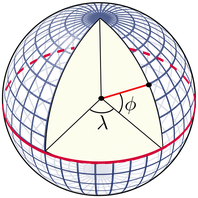Introduction to Spatial Data and Mapping

Reading time
Content
Geography is the study of places, landscapes, environments, and the relationships between people and their environments.
Data are facts and statistics collected together for reference or analysis
Spatial data refers to data which cover more than one spatial dimension (2D, 3D, …).
Geographic data (shortly geodata) are data representing features or phenomena related to the Earth.
Map is a downscaled and simplified drawing of the earth’s surface, or part of that surface.
Mapping in this context means a process of making a map. Beware that this word may have different meanings in different fields, like in mathematics.
Mapping can be also described as the process of creating visual representations of geographic data, transforming raw facts and statistics into understandable, spatially-organised information. It is invaluable for studying geography, as it helps illustrate the relationships between people, places and environments. By representing spatial data and geodata in the form of maps, mapping makes it easier to analyse and interpret the Earth's features and phenomena. Applications of mapping are diverse, including urban planning, environmental conservation, transportation logistics, disaster response and resource management, all of which benefit from clear, accessible visualisations of complex geographic data.